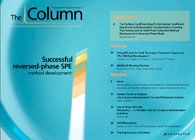Vehicle document forgery
The forging of vehicle registration documents has seen a sharp rise in recent years, with the issue being particularly problematic in Brazil.
The forging of vehicle registration documents has seen a sharp rise in recent years, with the issue being particularly problematic in Brazil.
A study has been carried out using easy ambient sonic-spray ionization mass spectrometry (EASI–MS) to analyse the documents of Brazilian vehicles for authenticity. This cleverly creates a chemical profile directly from the surface of each document.1
The team analysed 40 authentic and counterfeit documents using both positive and negative ion modes, EASI (±)–MS. They identified the presence of (bis(2-ethylhexyl)phthalate plasticizer and of dihexadecyldimethylammonium biocide in both types of documents. For EASI(−)–MS results, the 4-octyloxybenzoic acid additive ([M + H]+ : m/z 249) was found only in counterfeit documents.
The team was also able to link the forged documents to the type of printers that were being used to produce them and concluded that Laserjet printers were most likely being used.
They concluded that the presence of a peak at m/z 249 in the negative ion EASI(−)–MS of a vehicle document was an excellent way to characterize the counterfeiting methods being utilized.
1 Eberlin et al., Journal of Forensic Sciences, DOI: 10.1111/j.1556-4029.2011.02005.x (2012).
This story originally appeared in The Column. Click here to view that issue.

A Novel LC–QTOF-MS DIA Method for Pesticide Quantification and Screening in Agricultural Waters
May 8th 2025Scientists from the University of Santiago de Compostela developed a liquid chromatography quadrupole time-of-flight mass spectrometry (LC–QTOF-MS) operated in data-independent acquisition (DIA) mode for pesticide quantification in agriculturally impacted waters.
Investigating 3D-Printable Stationary Phases in Liquid Chromatography
May 7th 20253D printing technology has potential in chromatography, but a major challenge is developing materials with both high porosity and robust mechanical properties. Recently, scientists compared the separation performances of eight different 3D printable stationary phases.

.png&w=3840&q=75)

.png&w=3840&q=75)



.png&w=3840&q=75)



.png&w=3840&q=75)










